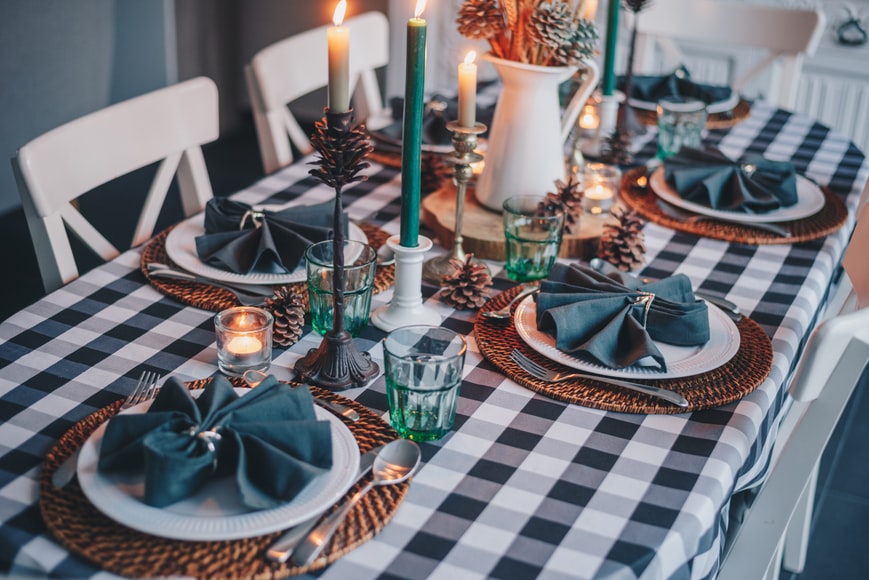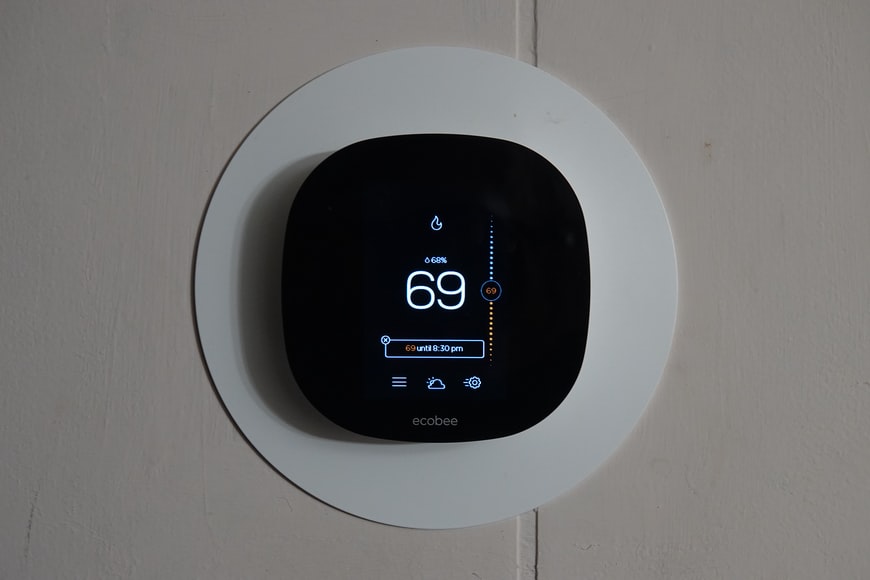
Have you started thinking about your New Year Resolutions yet? Some of us make a habit of this every year, likely thinking along the lines of what we might like to change about ourselves, from eating healthier and working out more, to perhaps committing to disconnecting from technology and work for larger stretches each day. But have you thought about resolutions you should make for your home? Probably not, but as it turns out, the New Year is the perfect time to assess some of the things around your home that you’d either like to change, or just need to make sure you stay on top of. Here are a few suggestions for resolutions you can make to allow your home to run more smoothly and be a more enjoyable atmosphere in 2022.
Review the Holidays and Plan for Next Year

Do you find yourself scrambling in early November to plan for the upcoming holiday festivities? If so, you likely run into some of the same challenges year after year. Instead, start 2022 by doing a quick review of what worked well and what didn’t throughout the 2021 holiday season. Did you have enough chairs at the dining room table, or enough alternative seating for unexpected guests and a kids’ table if needed? Make a list now of the things your home needs to better host next year’s gatherings. It might be a list of items you need to purchase, or simply a better way to rearrange the layout to allow for an easier flow of both people and conversations. Plot the needed changes out in early January, and consult your notes periodically throughout the year so that you can take advantage of seasonal sales and unexpected finds.
Take this planning a step further and begin a running list of holiday gifts you expect to give next year. Many of these items can be purchased throughout the year as you see just the perfect thing for each person on your list. As long as you have room to store such items away, you can often complete as much as 75% of your holiday shopping long before the stress of holiday planning kicks in. This is a great way to save yourself time and energy next November and December.
Pace Yourself with Decluttering and Cleaning

Almost everyone looks at early January as the perfect time to rid their homes of unnecessary clutter, so as to better start fresh in the new year. As the holiday decorations come down and are stowed away for the next year, we are often finally able to see what needs to be reorganized and deep cleaned. The problem with attacking everything at once is that we often get burned out and either fail to get to everything, or we do not do as thorough a job as needed. Instead of this “all or nothing right now” approach, begin your winter cleaning project room by room, beginning with the parts of your house that receive the most foot traffic.
Start by decluttering, remembering to go through every cabinet, drawer and closet, so that all nooks and crannies are searched for unneeded items. Sort as you go into collections of items for the trash, recycling, donation, or simply storage in more sensible locations. Once the clutter is removed, deep clean the entire room from floor to ceiling, including furniture. Then take at least a week’s break before you begin the next room. Take notes that you can keep for next year outlining the order in which you worked. This outline can become your yearly deep cleaning schedule.
Prepare for Emergencies

Destructive events can happen to your home any time of year, so make it a point this January to outfit your home with all of the items necessary to keep you, your family, and your belongings safe. Purchase at least one well stocked first aid kit, and consider more than one if you have a larger home or detached buildings on your property. Keep one kit in a garage, basement or workshop, and one in the main living quarters. You should also assemble an emergency disaster kit to keep on hand in case winter snow or spring storms lead to an extended power outage. This kit should include enough drinking water for each member of your family, including pets, for 3-4 days, an extra supply of any needed medications, several blankets, shelf stable food supplies (including a way to open any jars or cans), a weather radio, flashlights, spare batteries and cash.
Check the batteries and power supplies of all smoke and carbon monoxide detectors at this time, and keep track of how long you have had each unit. According to Consumer Reports, carbon monoxide detectors should be replaced every five years, and smoke detectors should be replaced every ten. You should have one carbon monoxide detector for each floor of your home, and a smoke detector should be placed in each bedroom, hallway, and one each in the basement and attic if applicable to your home. Make sure you also have a fire exit strategy for your home. If you have second floor or higher bedrooms, make sure you have fire ladders and make sure all family members are aware of the exit plan. Young children should be taught how to open windows and where to assemble after escaping a fire. Everyone in the home should also be aware of the safest place to gather during a tornado. This will ideally be a basement, but if you do not have one, any interior and windowless room on the ground floor will do.
Conduct an Energy Audit

Many utility companies offer a home energy audit as a free service, so if yours does, the new year is a great time to schedule one. A professional assessment is the best way to see where you might be able to save energy around your home, but you can also do a walk through assessment yourself. A helpful tool for the DIYers can be found at the Department of Energy’s Do-It-Yourself Home Energy Assessment. Even newer homes sometimes need energy efficient upgrades, because these technologies are ever changing and improving.
Some simple steps you can go ahead and begin taking to conserve energy might seem like no brainers, but they are habits we sometimes have to make or break. Start by turning off lights every time you leave a room, which can be made easier with the installation of smart switches. Turn off your heat when you leave your home for extended periods of time, such as if your home sits empty throughout the day, and make sure your thermostat is turned down at night. Using the schedule feature on your thermostat will make this much easier to remember. Replacing light bulbs with CFL or LED bulbs saves more energy than you might think, especially over time, and turn off any power strips when the units plugged in are not in use.
Improve Your Indoor Air Quality

Make a commitment in the new year to improving the air you breathe in your home. For most of us, the single biggest source of unclean air in our home is an old, dirty filter in the furnace. Follow the schedule recommended by your HVAC service professional for replacing filters, and make sure you stick to it, keeping in mind that you may need to replace the filter more often in the winter months if you are putting your system to heavy use. A clean filter will rid your home of dust and pollen, major allergy and asthma triggers. Other items in your home may also use filters, so make sure those are being replaced regularly as well. Vacuum cleaners, clothes dryers, and kitchen vents are common appliances that use filters, and it is just as important to clean and replace these as the ones in your furnace.
If you use a humidifier in your home during the winter, make sure you are cleaning it regularly, because the water basin can easily breed bacteria if it is allowed to sit. Check your owners manual for the recommended cleaning instructions for your unit. Homes with a lot of carpet and/or rugs tend to trap more allergens than those with mainly hardwood flooring, so make sure carpets and rugs are cleaned thoroughly at the start of the new year. Because these textiles act as their own filters, a deep cleaning is necessary to thoroughly remove the build up.
You can also contribute to the healthiness of your home’s air by bringing in fresh plants and flowers. After all, plants are nature’s natural air filters, and introducing a few indoor plants to your home can lead to vast improvements in your home’s air quality, while also enhancing your décor. Large plants like palm trees clean the air while making a major statement, but you can reap the air cleansing benefits from smaller plants like ferns and lilies as well. And, lilies are known to bloom even when kept indoors. In addition to cleaning your air, flowers and plants act as at-home aromatherapy to lift your mood or help you relax. Place an arrangement of fresh cut flowers in several different rooms, and replace them regularly.

